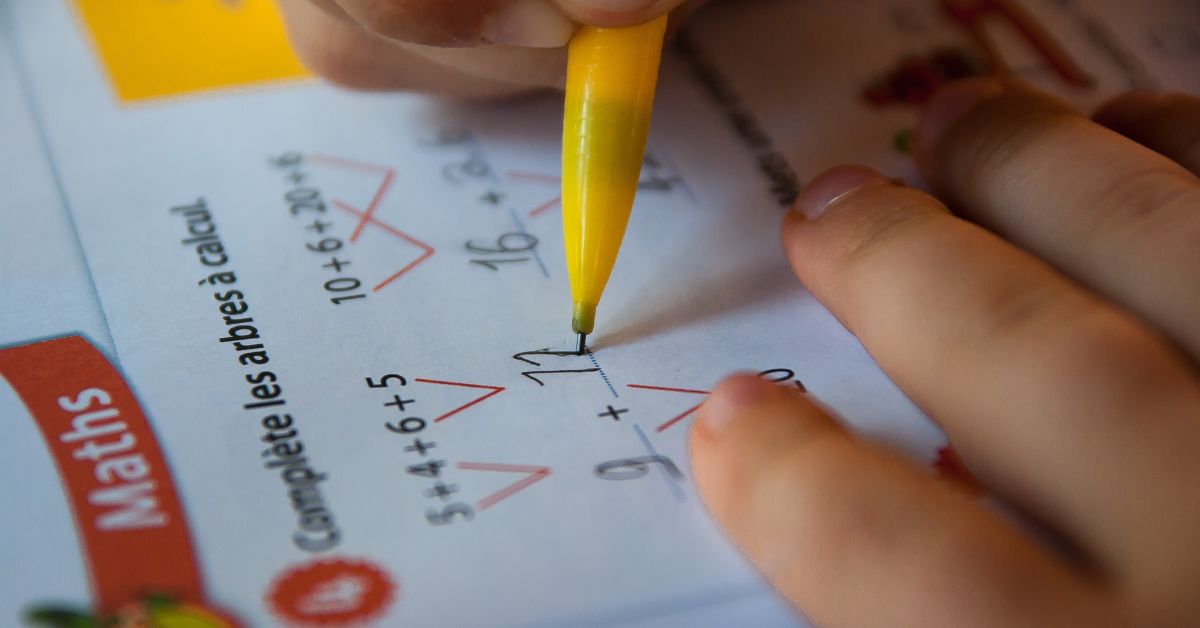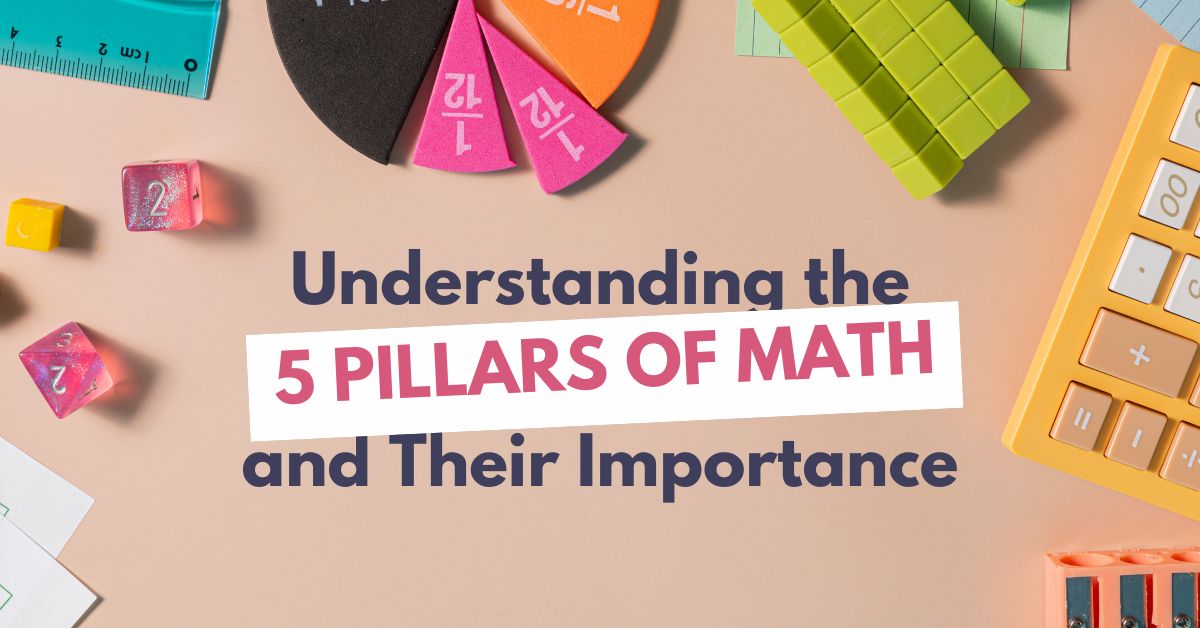Math is more than memorizing formulas or solving equations. It’s a way of thinking, reasoning, and solving problems. When teaching your kids math at home, understanding the foundation of what they need to learn can make a significant difference. These foundational ideas can be grouped into what educators call the 5 pillars of math. They are algebraic reasoning, proportional reasoning, number sense, and operational sense. A strong grasp of these pillars equips students with the tools they need to tackle not only math problems but real-world challenges too.
This article will break down these five pillars, explain why they are so important, and help you integrate them into your homeschooling practices effectively.
1. Algebraic Reasoning
Algebraic reasoning is all about recognizing patterns, understanding relationships, and solving problems using equations. It lays the groundwork for advanced math topics like algebra and calculus, but it’s also incredibly practical for everyday life.
Why It Matters:
- Algebraic reasoning helps kids make connections between numbers and operations.
- It enables problem-solving by teaching them to use symbols and variables.
- Skills in this area are critical for careers in STEM fields, but they also offer tools for thinking logically in any field.
How to Build Algebraic Reasoning at Home:
- Use patterns and sequences: Introduce puzzles, games, or activities that focus on patterns. These can include arranging objects by specific rules or using online algebra games.
- Focus on real-world examples: Show your kids how algebra applies to their lives. For instance, you can use algebra to calculate savings when items are discounted during shopping.
- Practice with word problems: Incorporate problems that require setting up and solving equations to develop critical thinking.
2. Proportional Reasoning
Proportional reasoning involves understanding relationships between quantities and using ratios, rates, and proportions to solve problems. This pillar is key to understanding fractions, decimals, percentages, and even scaling recipes in the kitchen.
Why It Matters:
- Proportional reasoning is foundational for many areas of science, including biology and chemistry.
- It is essential for practical life skills, such as understanding interest rates or comparing prices at the store.
- Mastering this concept supports the ability to reason logically in many areas of life.

Activities to Strengthen Proportional Reasoning:
- Cook together: Double or halve recipes to teach kids how proportions work in real life.
- Play unit conversion games: Use gallons, liters, miles, and kilometers to give them practice converting units and understanding ratios.
- Explore maps: Use map scales to show how real distances are represented proportionally.
Learning proportional reasoning isn’t just about math lessons. It’s also about noticing these relationships in everyday tasks.
3. Number Sense
Number sense involves understanding and working with numbers fluently. It is the foundation for every other area of math and includes skills such as estimating, recognizing number patterns, and performing basic calculations mentally.
Why It Matters:
Developing number sense helps children:
- Quickly estimate and judge whether an answer makes sense.
- Grasp the size and role of numbers in their environment.
- Lay a strong foundation for more complex topics in math, like algebra and geometry.
Unlike rote memorization of math facts, number sense focuses on understanding and intuition.
Building Number Sense in Everyday Life:
- Encourage mental math exercises; challenge your child to add or multiply numbers in their head during car rides or while shopping.
- Use visual aids like number lines, counters, and charts to help younger children see how numbers relate to each other.
- Discuss numbers often. Whether you’re talking about age, time, or money, make conversations about numbers part of your daily routine.
4. Operational Sense
Operational sense is about understanding how basic mathematical operations work together, such as addition, subtraction, multiplication, and division. Just as grammar enables communication in language, operational sense enables children to accurately handle calculations and solve problems.
Unlike simply memorizing math facts, operational sense involves understanding the “why” of math. For example, children learn why subtracting a negative number is the same as adding.
Why It Matters:
- Builds problem-solving skills.
- Teaches kids to approach more complex problems with logical steps.
- Helps them understand different methods to reach the same solution.
Strategies to Develop Operational Sense:
- Teach strategies, not just answers: Show how to break problems into smaller steps, like splitting 12 x 15 into (12 x 10) + (12 x 5).
- Explore all operations regularly: While multiplication and division often come later, they’re just as important as addition and subtraction. Integrate all four into practice problems.
- Reflect on answers: Ask your child to explain their answer to reinforce understanding.
Why Are the 5 Pillars of Math Critical?
Math skills don’t exist in a vacuum. They provide tools to interpret the world, from budgeting household finances to measuring ingredients for a recipe. By focusing on the 5 pillars of math, you’re not just teaching abstract concepts. You’re building problem-solving skills and confidence.
Beyond their immediate application, these pillars prepare students for future learning. For example, algebraic reasoning unlocks paths to advanced math, while number sense sets the stage for performing calculations effortlessly. Likewise, proportional reasoning helps children grow into adults who can assess situations logically and make informed decisions.
Homeschoolers often have the unique opportunity to bring math concepts to life. Instead of sticking strictly to formulas and textbooks, you can use tools like manipulatives, games, and real-world applications to make these pillars tangible and engaging.
How to Make Math Come Alive at Home
Many parents wonder how to make these concepts stick. Teaching math at home offers incredible flexibility to adapt lessons to your child’s interests and pace.
Ideas to Incorporate the 5 Pillars in Daily Life:
- Create a math corner with physical tools like base-ten blocks, measuring tapes, and graphing paper.
- Combine math with other subjects. For example, during science experiments, use proportional reasoning to mix chemicals or measure reaction rates.
- Include board games and apps that encourage problem-solving and reasoning, such as multiplication games or logic puzzles.
When children see math as something they do instead of something they memorize, they are more likely to enjoy it and retain what they learn.
Final Thoughts
When homeschooling, understanding the 5 pillars of math is essential to build a strong foundation for your child’s education. Always remember that these pillars are interconnected. For instance, without strong number sense, proportional reasoning becomes a struggle. Similarly, algebraic reasoning builds on operational sense.
The good news is you don’t need to tackle all of these at once. Focus on building each skill incrementally by incorporating activities they can relate to. With patience, practice, and creativity, your child will gain not just math skills but confidence and curiosity that lasts a lifetime.



